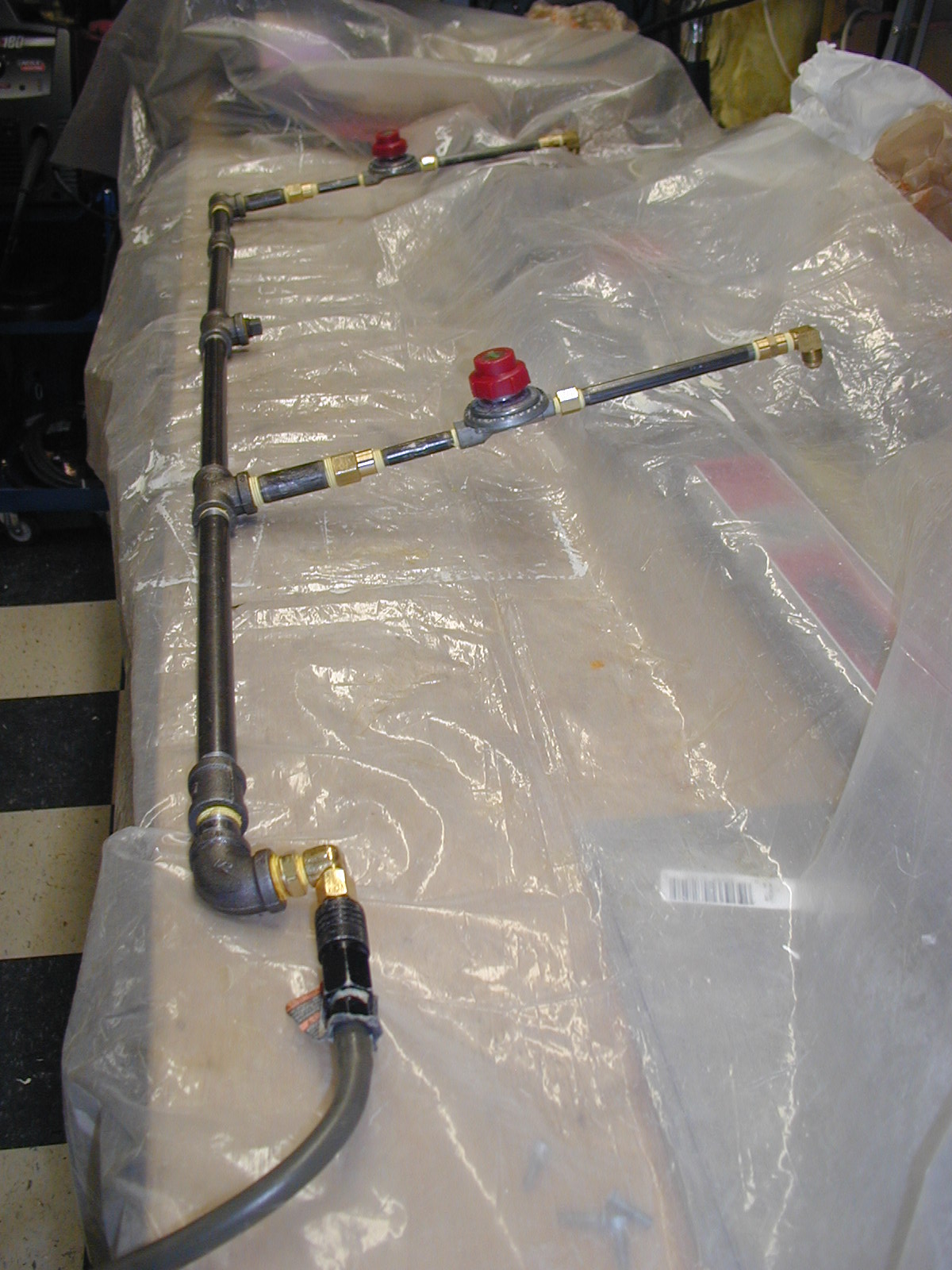Hey, I'm not sure if any of the original posters are even members, but thought I'd ask the group. I'm in the process of building a new brewing setup and want to be able to run two burners off of one tank. In time, I'll eventually tie in some burner controllers, but for now it'll be manual still.
Anyway, I'm curious about gas management and making sure I get good gas/heat management. I've built a 1/2" manifold that is about 3.5 ft long. To describe, this the propane tank will connect to one end. About 18" down there is a T-connector where the first burner will connect. Down another 24" is a 90 degree turn that has another connection for the second burner.
The first burner will be a TopTier Blichmann burner. The second will be a Hellfire Blichmann burner.
Reading over this thread got me thinking about gas distribution. My original thought was to connect a hose (typical BBQ hose) from the propane tank to the end of the manifold, using a 3/8" flare connector. Then I would just use 3/8" hoses to go from the ports on the manifold to the burners. After reading, I am thinking this will not be efficient at all.
Then I figured I could get a larger more capable regulator (support 200,000BTU) and connect that to the manifold. That might work. However, then have concerns over how that gets distributed to the burners and if that's too much flow, etc.
So my current thought now is this. (Please refer to the attached image for more details)
Get an RV style hose that has the tool-less ACME connector on one end and a 1/4" male connector on the other end. Use this to connect the tank directly to the manifold (#1). There not be a regulator installed here. However, I have tested the manifold and it holds 14 PSI with no issues - so I think that'll be good. Next I can use adapters to convert the T-connectors from 1/2" down to 1/4" and attach 1/4" to Propane ACME adapters. That would allow me to then connect the original hoses (#2 and #3) from the Blichmann burners (using their regulators) directly to the manifold. This should regulate the pressures based on their regulators/specs.
In my mind, this makes sense. For the most part I would have 1/2" connections all the way up to the regulators (with the exception of a couple stepdowns for the 1/4" connectors. The hoses themselves are the standard 3/8" OD.
These might be dumb questions, but I'm new to the gas idea and BTU utilization, blah blah blah.
Thoughts?






